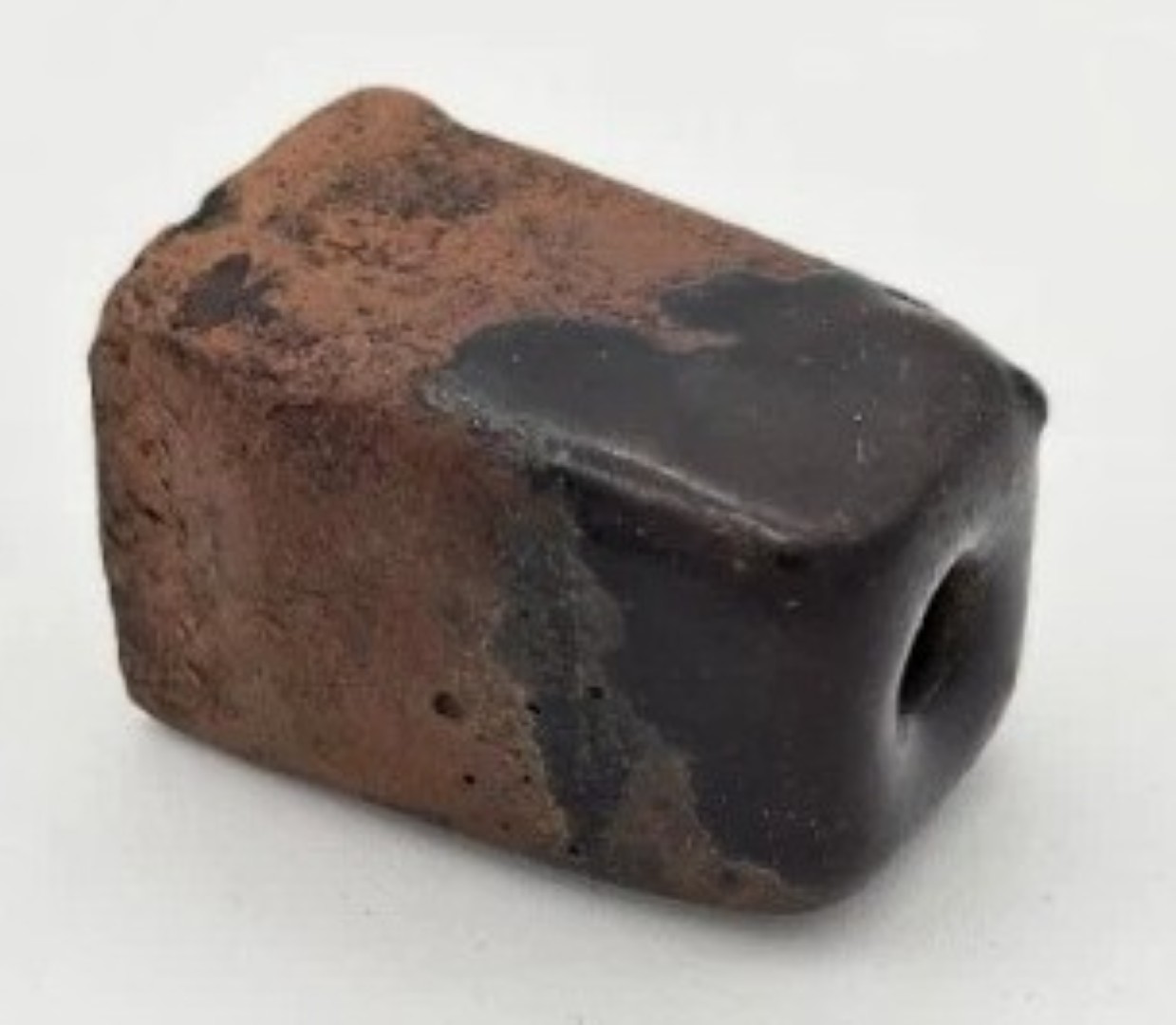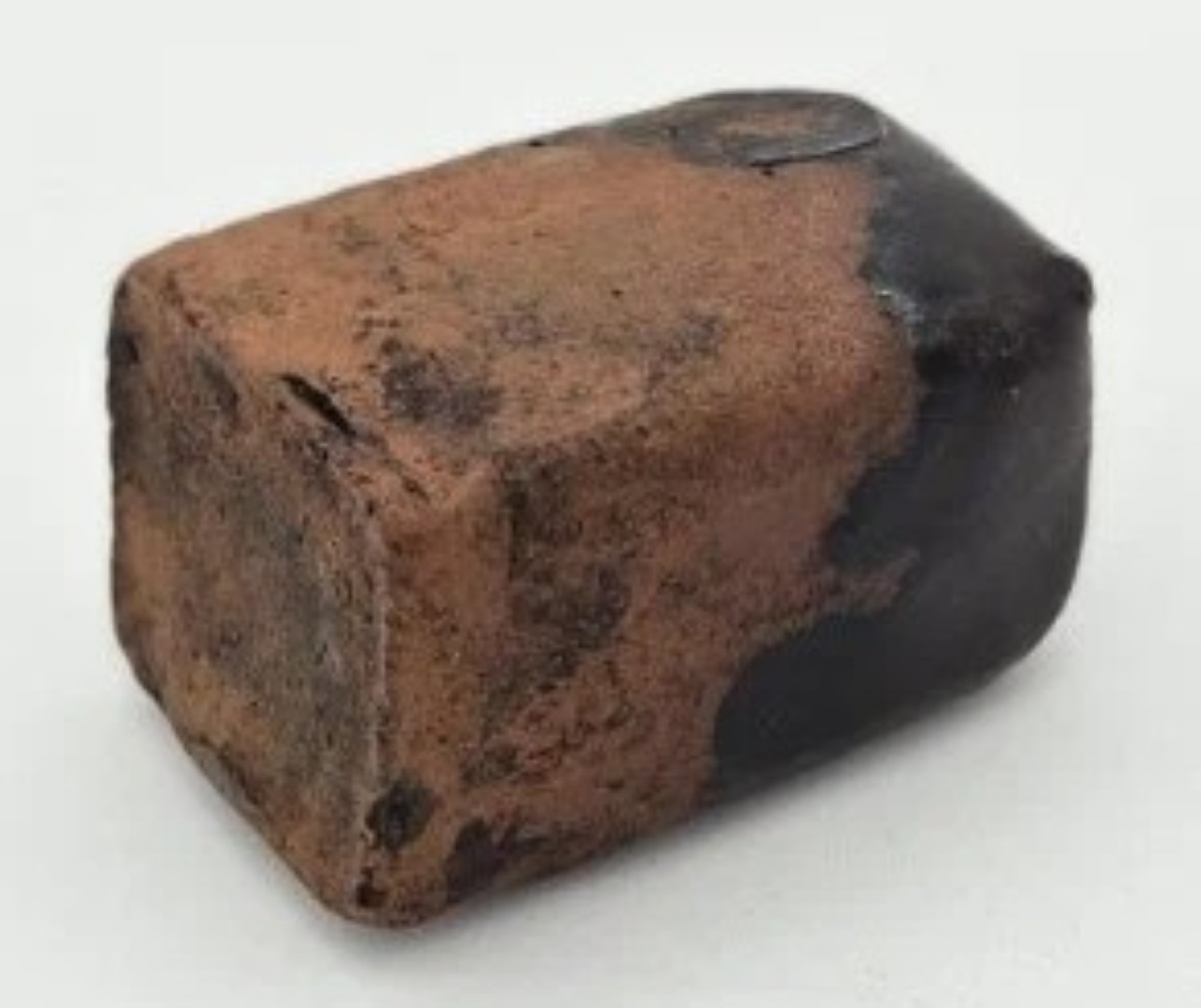
Primitive Redware Inkwell
| Categories | Early - Primitive, Share Event |
| Material | Redware |
| Markings | Unmarked |
| Manufacturer | Undetermined |
| Origin | United States |
| Date or Era | late 18th or early 19th century |
| Measuring | 1 ¾” high |
This is a primitive redware inkwell with a brown slip glaze on the upper portion, dating to the late 18th or early 19th century.
What is redware? Redware is a type of earthenware pottery made from reddish-colored clay that was readily available in colonial America. It was the most common and inexpensive utilitarian pottery used by people of all social classes until stoneware and other materials became more widely available in the mid-19th century. The reddish color comes from the iron content in the clay, which turns red when fired in a kiln.
The “Primitive” Look This inkwell’s “primitive” appearance is a testament to its age and handmade nature. Unlike the more refined European ceramics, early American redware was typically made by local potters using basic tools and techniques. The uneven shape and imperfections in the glaze are not flaws; they are characteristic features that authenticate its early origin.
The Slip Glaze The brown slip glaze is a common decorative and functional element of redware. A “slip” is essentially a liquid clay, and it was applied to the pottery before firing. In this case, the potter likely dipped the upper portion of the inkwell into a slip that contained a colorant, giving it the distinctive brown finish. The glaze itself was often a clear lead glaze that gave the piece a glossy, durable, and somewhat waterproof surface. The way the glaze only covers the top part of the inkwell is a typical characteristic of these early, simple wares.
Functionality and Design Inkwells like this were designed to hold a small amount of ink for dipping quill pens. While some more elaborate redware inkwells had multiple holes for storing quills, this inkwell’s simple, tall body and narrow opening were perfectly functional. The design made it easy to dip a quill and, more importantly, reduced the chances of the ink spilling or evaporating.
Sold for $165 in July 2025
Content disclaimer. The information posted is the owner’s best knowledge and may not have been vetted by the SOIC. We welcome comments, corrections, and additions, working to make our website information comprehensive and accurate.
Join the Society of Inkwell Collectors (SOIC) – it’s free!
Founded in 1981 as a non-profit organization,
we are documenting inkwells (and accessories).
We’re here to help and inform!







